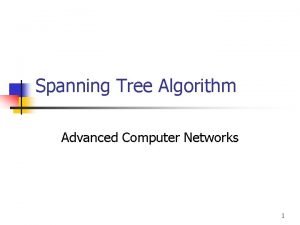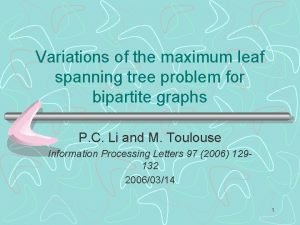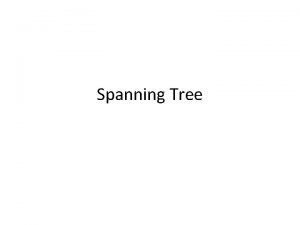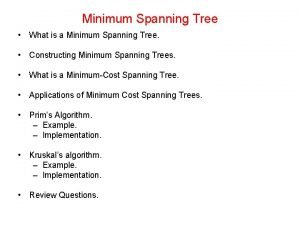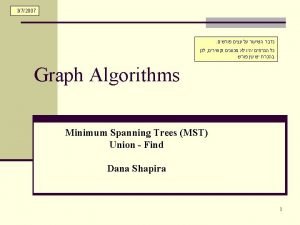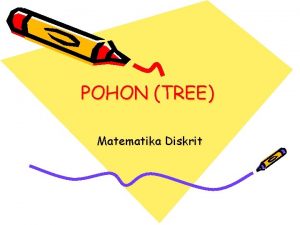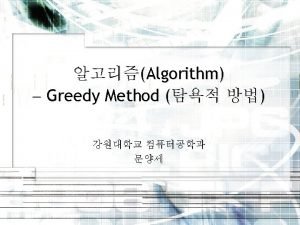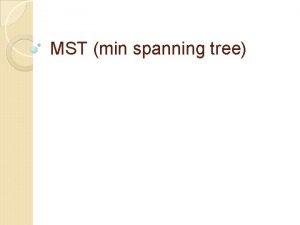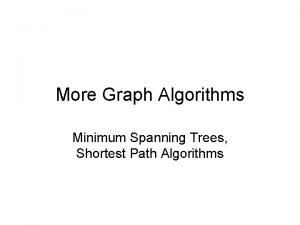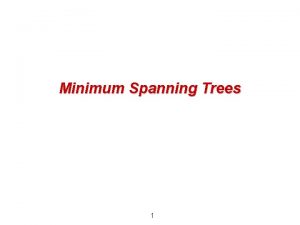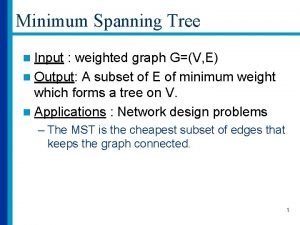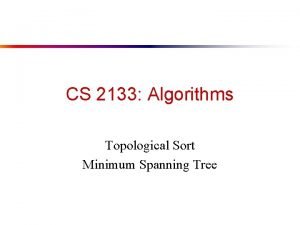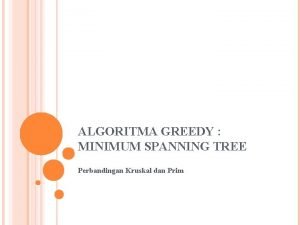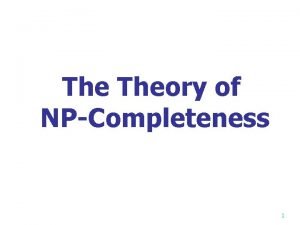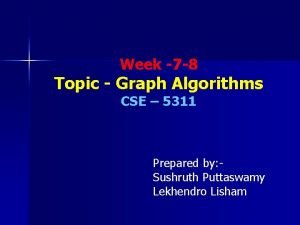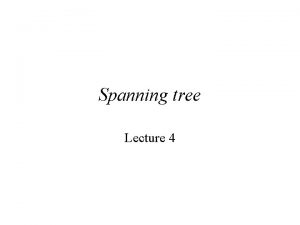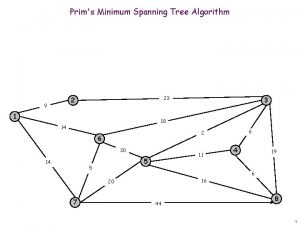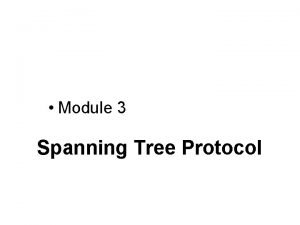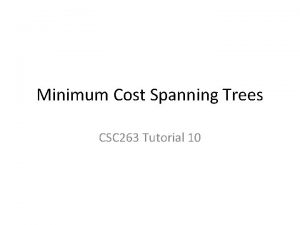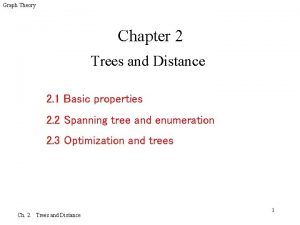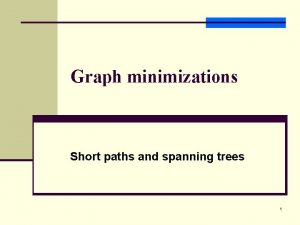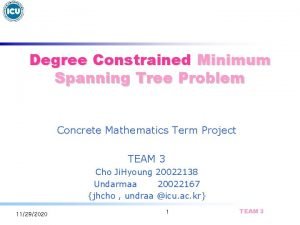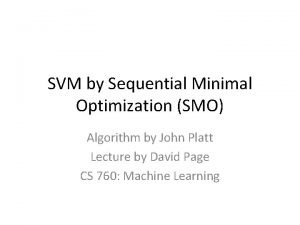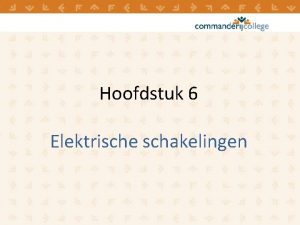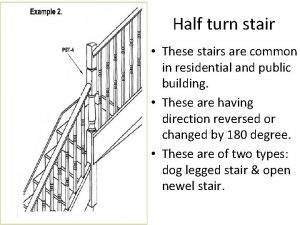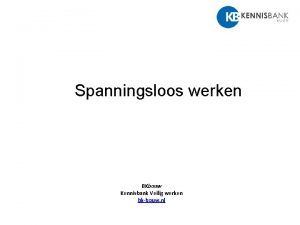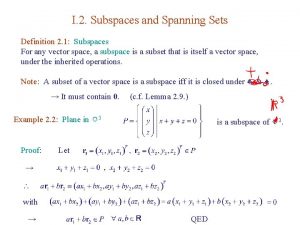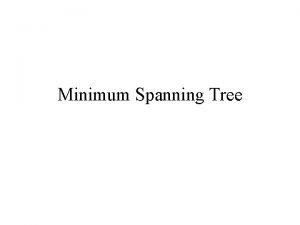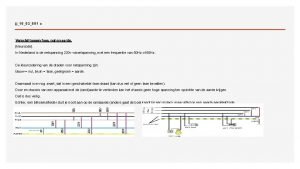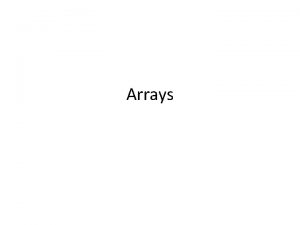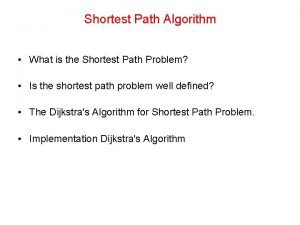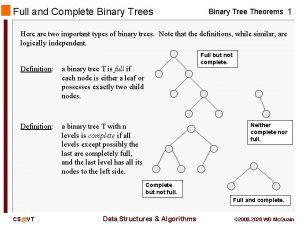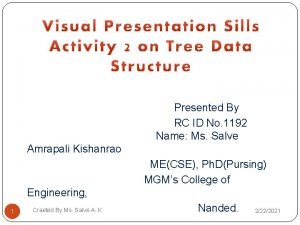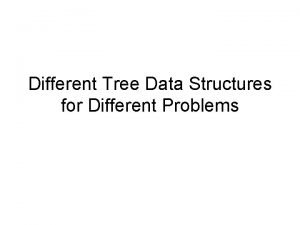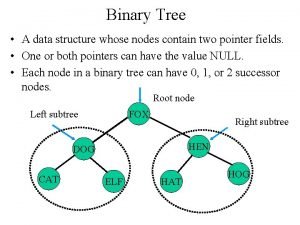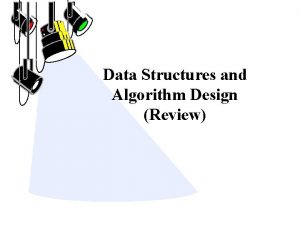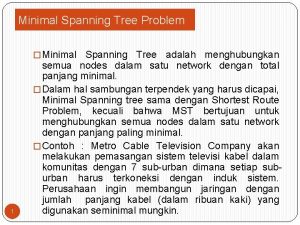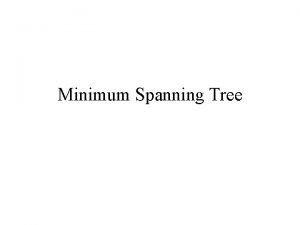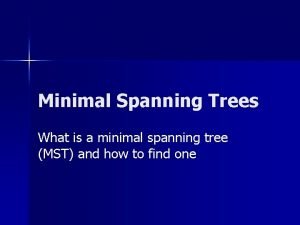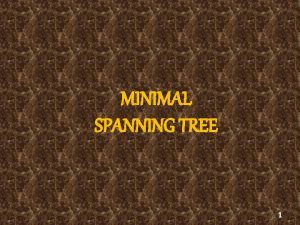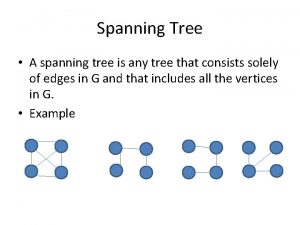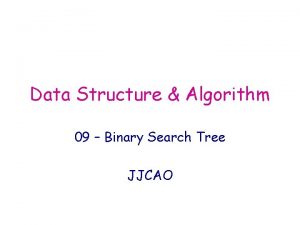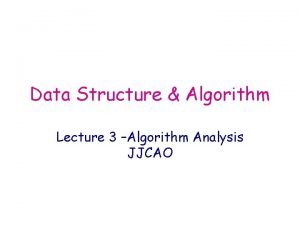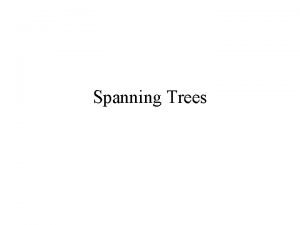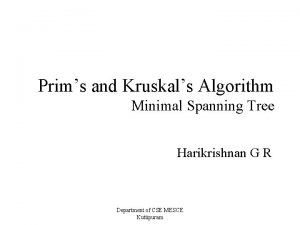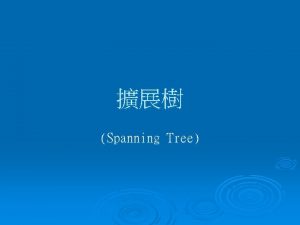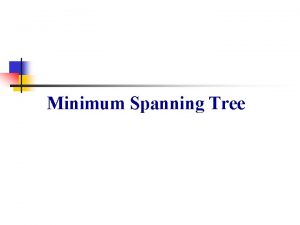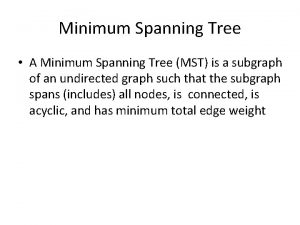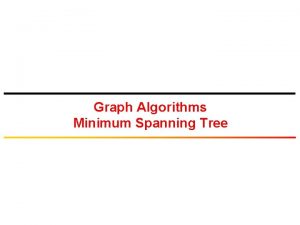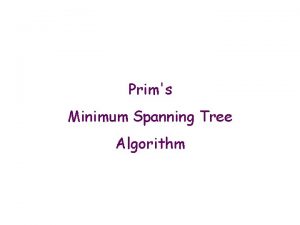Data Structure Algorithm 11 Minimal Spanning Tree JJCAO






![Normal Consistency [Hoppe et al. 1992] • Based on angles between unsigned normals • Normal Consistency [Hoppe et al. 1992] • Based on angles between unsigned normals •](https://slidetodoc.com/presentation_image_h/310fdbd6a52bc3291e84f2d8bcc3d69f/image-7.jpg)













































- Slides: 52

Data Structure & Algorithm 11 – Minimal Spanning Tree JJCAO Steal some from Prof. Yoram Moses & Princeton COS 226

Weighted Graphs • 2

Sub-Graphs Note: G' is not a spanning sub-graph of G 3

Minimum Spanning Tree • • A Subgraph A tree Spans G Of minimal weight 4

MST Origin Otakar Boruvka (1926). • Electrical Power Company of Western Moravia in Brno. • Most economical construction of electrical power network. • Concrete engineering problem is now a cornerstone problem in combinatorial optimization. 5

MST describes arrangement of nuclei in the epithelium for cancer research http: //www. bccrc. ca/ci/ta 01_archlevel. html 6
![Normal Consistency Hoppe et al 1992 Based on angles between unsigned normals Normal Consistency [Hoppe et al. 1992] • Based on angles between unsigned normals •](https://slidetodoc.com/presentation_image_h/310fdbd6a52bc3291e84f2d8bcc3d69f/image-7.jpg)
Normal Consistency [Hoppe et al. 1992] • Based on angles between unsigned normals • May produce errors on close-by surface sheets 7

MST is fundamental problem with diverse applications • Network design. – telephone, electrical, hydraulic, TV cable, computer, road • Approximation algorithms for NP-hard problems. – traveling salesperson problem, Steiner tree • Indirect applications. – – – – max bottleneck paths LDPC codes for error correction image registration with Renyi entropy learning salient features for real-time face verification reducing data storage in sequencing amino acids in a protein model locality of particle interactions in turbulent fluid flows autoconfig protocol for Ethernet bridging to avoid cycles in a network • Cluster analysis. 8

Minimum Spanning Tree on Surface of Sphere 5000 Vertices 9

Minimum Spanning Tree Input: a connected, undirected graph - G, with a weight function on the edges – wt Goal: find a Minimum-weight Spanning Tree for G Fact: If all edge weights are distinct, the MST is unique Brute force: Try all possible spanning trees • problem 1: not so easy to implement • problem 2: far too many of them Ex: [Cayley, 1889]: V^{V-2} spanning trees on the complete graph on V vertices. 10

Main algorithms of MST 1. Kruskal’s algorithm 2. Prim’s algorithm Both O(Elg. V) using ordinary binary heaps Both greedy algorithms => Global solution 3. … 11

Two Greedy Algorithms • Kruskal's algorithm. Consider edges in ascending order of cost. Add the next edge to T unless doing so would create a cycle. • Prim's algorithm. Start with any vertex s and greedily grow a tree T from s. At each step, add the cheapest edge to T that has exactly one endpoint in T. Greed is good. Greed is right. Greed works. Greed clarifies, cuts through, and captures the essence of the evolutionary spirit. " - Gordon Gecko 12

Cycle Property • Let T be a minimum spanning tree of a weighted graph G • Let e be an edge of G that is not in T and C be the cycle formed by e with T • For every edge f of C, weight(f) ≤ weight(e) Proof: • By contradiction • If weight(f) > weight(e) we can get a spanning tree of smaller weight by replacing e with f 13

Edges cross the cut 14

Cut (/Partition) Property Lemma: Let G =(V, E) and X ⊂ V. If e = a lightest edge connecting X and V-X then e appears in some MST of G. Proof: • Let T be an MST of G • If T does not contain e, consider the cycle C formed by e with T and let f be an edge of C across the partition • By the cycle property, weight(f) ≤ weight(e) • Thus, weight(f) = weight(e) • We obtain another MST by replacing f with e locally optimal choice (of lightest edges) globally optimal solution (MST) 15

Disjoint Set ADT 16

An application of disjoint-set data structures 17

Linked List Implementation 18

Union in Linked List Implementation 19

20

Worst-Case Example • 21

Weighted Union Heuristic • Each set id includes the length of the list • In Union - append shorter list at end of longer Theorem: Performing m > n operations takes O(m + nlgn) time 22

Simple Forest Implementation Find-Set(x) follow pointers from x up to root Union(c, f) - make c a child of f and return f ∪ 23

Worst-Case Example n … 3 2 1 24

Weighted Union Heuristic • Each node includes a weight field weight = # elements in sub-tree rooted at node • Find-Set(x) - as before O(depth(x)) • Union(x, y) - always attach smaller tree below the root of larger tree O(1) 25

Weighted Union Theorem: Any k-node tree created using the weighted-union heuristic, has height ≤ lg(k) Proof: By induction on k Find-Set Running Time: O(lg n) 26

2 nd heuristic: Path Compression 27

The function lg n = the number of times we have to take the log 2 n repeatedly to reach root node Lg 2 = 1 Lg 2^2 = 2 Lg 2^16 = lg 65536 = 16 => Lg n < 16 for all practical values of n 28

Theorem(Tarjan): If S = a sequence of O(n) Unions and Find-Sets The worst-case time for S with – Weighted Unions, and – Path Compressions is O(nlgn) The average time is O(lgn) per operation in Linked List Implementation 29

Theorem(Tarjan): Let S = a sequence of O(n) Unions and Find-Sets The worst-case time for S with – Weighted Unions, and – Path Compressions is O(nα(n)) The average time is O(α(n)) per operation, α(n) < 5 in practice 30

Connected Components using Union-Find Reminder: • Every node v is connected to itself • if u and v are in the same connected component then v is connected to u and u is connected to v • Connected components form a partition of the nodes and so are disjoint: 31

MST-Kruskal's algorithm for minimum spanning tree works by inserting edges in order of increasing cost, adding as edges to the tree those which connect two previously disjoint components. The minimum spanning tree describes the cheapest network to connect all of a given set of vertices Kruskal's algorithm on a graph of distances between 128 North American cities 32

Example 33

34

MST-Kruskal 35

MST-Kruskal 36

MST-Kruskal Running Time: 37

MST-Prim-Jarnik 38

Example 39

MST-Prim-Jarnik 40

MST-Prim 41

MST-Prim 42

MST-Prim 43

Decrease_key(v, x) We use a min-Heap to hold the edges in G-T How can we implement Decrease key(v, x)? Simple solution: • Change value for v • Follow strategy for Heap_insert from v upwards • Cost: O(lg. V) 44

MST-Prim Running Time: 45

Does a linear-time MST algorithm exist? 46

Euclidean MST • 47

Scientific application: clustering k-clustering. Divide a set of objects classify into k coherent groups. Distance function. Numeric value specifying "closeness" of two objects. Goal. Divide into clusters so that objects in different clusters are far apart. outbreak of cholera deaths in London in 1850 s (Nina Mishra) Applications. • Routing in mobile ad hoc networks. • Document categorization for web search. • Similarity searching in medical image databases. • Skycat: cluster 109 sky objects into stars, quasars, galaxies. 48

Single-link clustering k-clustering. Divide a set of objects classify into k coherent groups. Distance function. Numeric value specifying "closeness" of two objects. Goal. Divide into clusters so that objects in different clusters are far apart. Single link. Distance between two clusters equals the distance between the two closest objects (one in each cluster). Single-link clustering. Given an integer k, find a k-clustering that maximizes the distance between two closest clusters. 49

Single-link clustering algorithm “Well-known” algorithm for single-link clustering: • Form V clusters of one object each. • Find the closest pair of objects such that each object is in a different cluster, and merge the two clusters. • Repeat until there are exactly k clusters. Observation. This is Kruskal's algorithm (stop when k connected components). Alternate solution. Run Prim's algorithm and delete k-1 max weight edges. 50

Dendrogram Tree diagram that illustrates arrangement of clusters. 51

Dendrogram of cancers in human Tumors in similar tissues cluster together 52
 Spanning tree algorithm in computer networks
Spanning tree algorithm in computer networks Minimum leaf spanning tree
Minimum leaf spanning tree Common spanning tree
Common spanning tree Spanning tree definition
Spanning tree definition Minimum cost spanning tree
Minimum cost spanning tree Spanning tree
Spanning tree Lazy dijkstra
Lazy dijkstra Math behind decision tree
Math behind decision tree Brily
Brily Dijkstra's algorithm proof
Dijkstra's algorithm proof Cisco spanning tree best practices
Cisco spanning tree best practices Contoh graf hutan
Contoh graf hutan Minimum spanning tree definition
Minimum spanning tree definition Minimum spanning tree shortest path
Minimum spanning tree shortest path Minimum spanning tree
Minimum spanning tree Minimum spanning tree weighted graph
Minimum spanning tree weighted graph Minimum spanning tree
Minimum spanning tree Algoritma kruskal
Algoritma kruskal Spanning tree of a graph
Spanning tree of a graph Spanning tree of a graph
Spanning tree of a graph Minimum spanning tree
Minimum spanning tree Stp protocol explained
Stp protocol explained Minimum spanning tree
Minimum spanning tree Spanning tree
Spanning tree Root path cost berechnen
Root path cost berechnen Csc longin
Csc longin Forest in graph theory
Forest in graph theory Minimum spanning tree
Minimum spanning tree Degree constrained spanning tree
Degree constrained spanning tree Asus spanning tree protocol
Asus spanning tree protocol Sequential minimal optimization algorithm
Sequential minimal optimization algorithm Queue is a static data structure
Queue is a static data structure Minimal common oncology data elements
Minimal common oncology data elements Vca toolbox
Vca toolbox Atoomkern
Atoomkern Stair slab spanning longitudinally
Stair slab spanning longitudinally Veilig werken langs de weg toolbox
Veilig werken langs de weg toolbox Minimum spanning set
Minimum spanning set Vlan spanning
Vlan spanning Boundary spanning leadership definition
Boundary spanning leadership definition Atoom
Atoom Spanning trees
Spanning trees Boundary spanning adalah
Boundary spanning adalah Spanning tussen fase en aarde
Spanning tussen fase en aarde Disjoint set adt
Disjoint set adt Traversing linear array
Traversing linear array Define shortest path problem
Define shortest path problem One way threaded binary tree
One way threaded binary tree Definition of complete binary tree
Definition of complete binary tree Siblings in tree data structure
Siblings in tree data structure Tree data structure problems
Tree data structure problems Binary tree in data structure
Binary tree in data structure Tree traversal in data structure
Tree traversal in data structure
